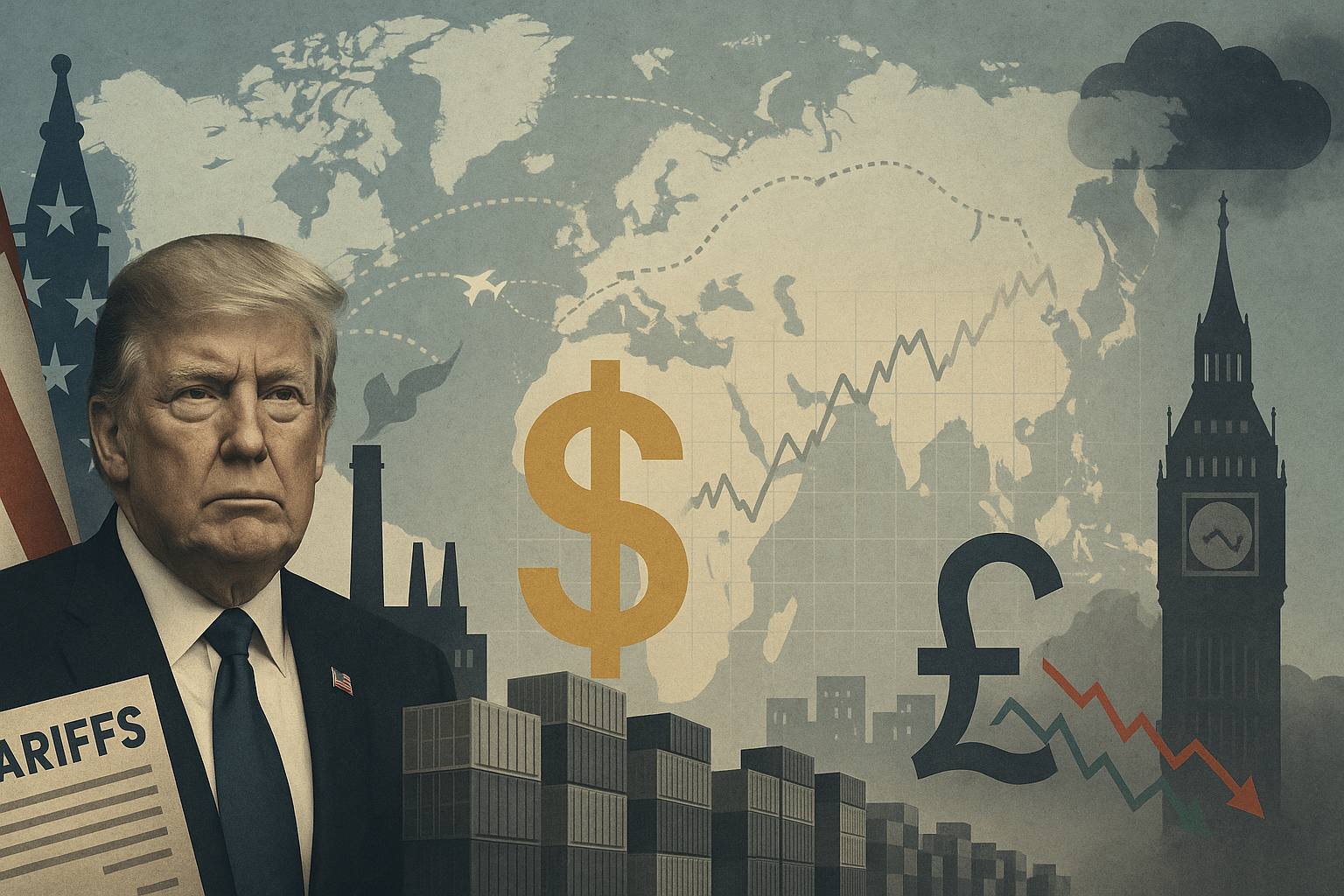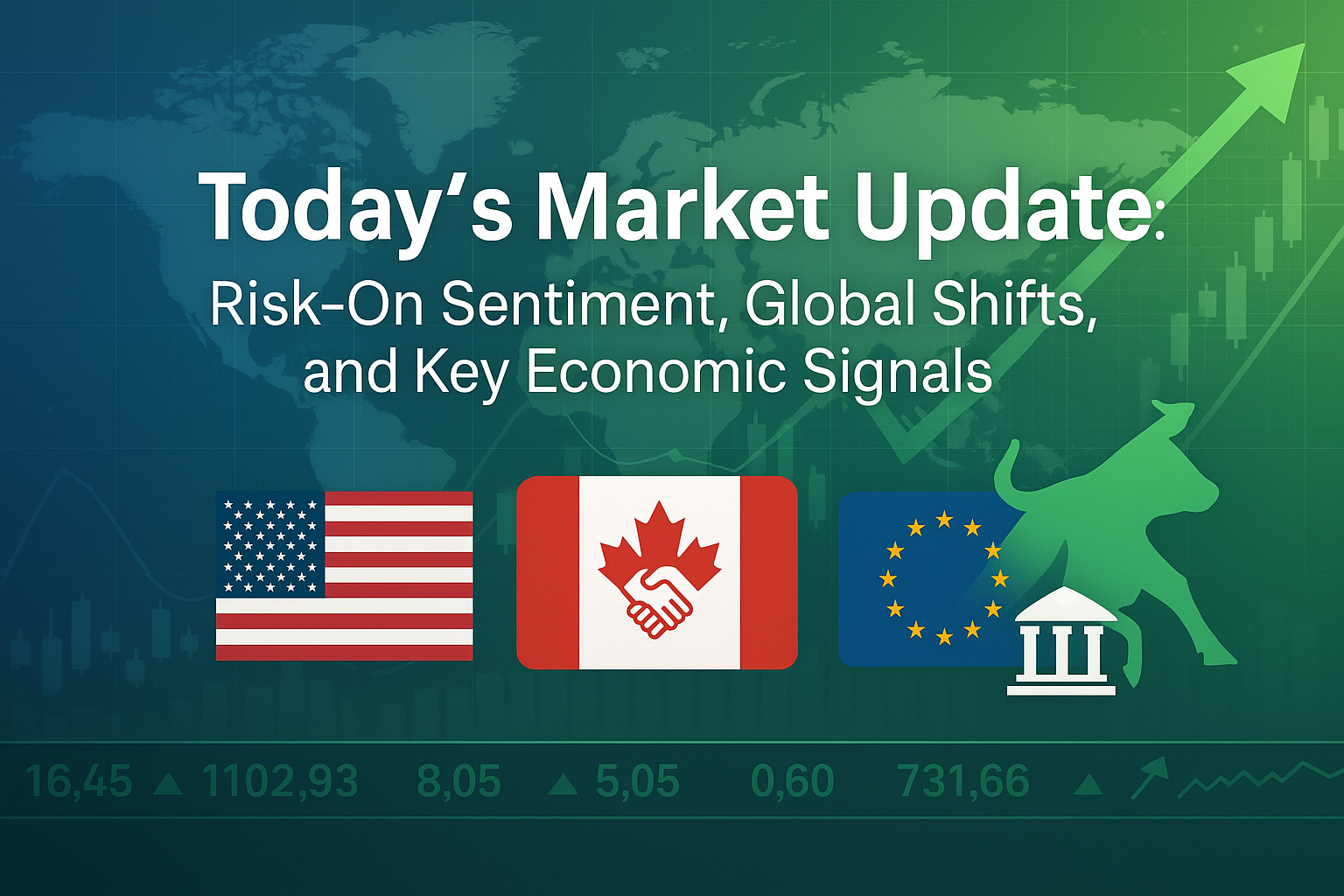How Inflation, Jobs Data & Trade Talks Are Shaping Global Markets
This week’s economic calendar is packed with market-moving data from the UK and US — including CPI inflation, jobs figures, and retail sales.
Key Market Insights:
- The European Union is seeking collaborative solutions with other nations affected by the ongoing situation, aiming for a unified approach to resolution.
- Meanwhile, the British pound is experiencing a continued decline against other currencies.
Market Recap
The financial markets experienced a turbulent close to last week, largely due to a significant announcement from the US. Here's a breakdown of what's been happening and what it could mean for you:
US-EU Trade Tensions Escalate
The United States announced a substantial 30% tariff on goods from the European Union, set to take effect on August 1st. This news triggered a downturn in both US and EU stock markets, reflecting investor concerns about potential trade disruptions.
The European Union is actively pursuing a resolution with the US before the deadline. However, in a strategic move, they are also engaging with other nations heavily impacted by tariffs, such as Japan and Canada, to explore combined approaches and mitigate the potential economic fallout. This suggests the EU is preparing for various scenarios, including the possibility of the tariffs going ahead.
Sterling Under Pressure Amidst Economic Doubts
Closer to home, the British pound (GBP) has seen its performance weaken. This comes amidst growing concerns about the health of the UK economy. Recent data revealed an unexpected contraction in Gross Domestic Product (GDP) by -0.1%, painting a less optimistic picture than anticipated.
Adding to the pressure, UK government bonds (gilts) have been experiencing upward movements, indicating increased borrowing costs for the government. This combination of negative GDP data and rising gilt yields put significant downward pressure on the pound at the end of last week, and it appears to be continuing into the new week.
Shifting Focus to Sterling
Previously, broader global events like tensions in the Middle East and general trade wars had somewhat overshadowed the pound's movements, often masked by periods of US dollar weakness. However, with these new developments surrounding the UK's economic performance and the direct impact of US tariffs, attention is now firmly returning to sterling markets. This means that the pound's sensitivity to domestic economic news and global trade dynamics is likely to be heightened in the coming period.
What this means for you:
- Potential for higher import costs: If US tariffs on EU goods come into effect, you might see price increases on imported European products.
- Currency fluctuations: The volatility in the pound could impact travel costs or the value of international investments.
- Economic uncertainty: The negative GDP data and ongoing trade disputes contribute to a period of economic uncertainty, which could affect various aspects of the economy.
Today’s Market Update:
As we move through the week, several important economic data releases are on the horizon, particularly for the UK and US, which could influence market movements.
Sterling's Path Ahead: UK Data in Focus
The British pound (GBP) faces another potentially challenging week with crucial economic figures due. We're awaiting the UK's Consumer Price Index (CPI) inflation data on Wednesday, followed by Jobs numbers on Thursday. Should inflation remain persistently high, raising concerns about "stagflation" (a period of low growth and high inflation), this could put further downward pressure on GBP, especially if coupled with positive developments in US-EU trade talks.
While the GBP has been under recent scrutiny, it's worth remembering that in June, the GBP/USD pair was in a similarly pressured position before ultimately reaching highs not seen since 2022. This serves as a reminder that the US dollar's current strength isn't necessarily a permanent fixture.
US Economic Barometers: Inflation and Retail Sales
Across the Atlantic, the United States will also be releasing its latest inflation figures and Retail Sales data this week. These reports will provide critical insights into consumer spending habits and broader inflationary pressures, which are key drivers of the US economy and will be closely watched by investors.
Global Trade Dynamics: The Tariff Landscape
While direct US-EU tariff tensions were a significant focus last week, the broader US trade policy continues to evolve. The US has sent letters to over 20 trading partners, delaying tariff implementation to August 1st. The announced rates for some countries, such as Brazil (50%) and Canada (35%), are notably higher than previous "Liberation Day" rates.
While many market participants view these as negotiating tactics rather than definitive implementations, some research suggests an increased risk of these higher tariffs materializing. The S&P 500 and European shares saw declines last week, while the US Dollar Index rallied, with hedge funds increasing their dollar positions.
The EU's President has indicated a preference for a negotiated solution, delaying their retaliatory tariffs until early August. While a 30% tariff on the EU would be a worst-case scenario, it's increasingly considered a possibility higher than the initial 10% baseline. The Euro's reaction has been relatively subdued so far, though significant headwinds could emerge if these tariffs are fully implemented.
China's Trade Performance: A Glimmer of Strength
In other global news, China's export growth for June surprisingly exceeded expectations, rising by 5.8% year-on-year. Imports also saw a modest increase of 1.1%, marking the first positive growth in four months. This stronger trade performance is partly attributed to companies expediting shipments to beat upcoming tariff deadlines and a shift in trade flows towards other markets. This positive trade data for China could offer some support to global economic sentiment.
What this could mean for you:
- GBP Volatility: Be prepared for potential fluctuations in the pound as the UK's inflation and jobs data are released.
- US Market Sensitivity: US inflation and retail sales will impact investor sentiment and could influence interest rate expectations.
- Trade Policy Watch: Continued monitoring of US trade policy and tariff negotiations is essential, as these developments can have broad implications across global markets.
14th July 2025
How We Can Help...
Our team are here to help you get more from your money when making international payments. We will work with you to understand your payment needs and offer guidance on the best options available to you.
Get in Touch!
P: 07441 910 897
E: FX-Admin@frank-exchange.com
This document has been prepared solely for information and is not intended as an Inducement concerning the purchase or sale of any financial instrument. By its nature market analysis represents the personal view of the author and no warranty can be, or is, offered as to the accuracy of any such analysis, or that predictions provided in any such analysis will prove to be correct. Should you rely on any analysis, information, or report provided as part of the Service it does so entirely at its own risk, and Frank eXchange Limited accepts no responsibility or liability for any loss or damage you may suffer as a result. Information and opinions have been obtained from sources believed to be reliable, but no representation is made as to their accuracy. No copy of this document can be taken without prior written permission.












